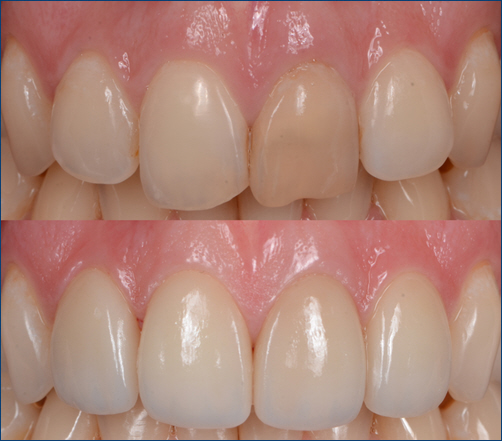Dental bonding is a versatile and effective cosmetic dental procedure designed to repair minor imperfections and enhance the appearance of your teeth. Whether you have a chipped tooth, gaps between your teeth, or discoloration, dental bonding can offer a practical solution. Here’s what you need to know about bonding, including when it’s needed and what to expect during the procedure.
When Is Dental Bonding Needed?
 Dental bonding is commonly used for a variety of aesthetic and functional issues, including:
Dental bonding is commonly used for a variety of aesthetic and functional issues, including:
-
- Chipped or Cracked Teeth: Bonding can repair minor chips and cracks, restoring the tooth’s shape and function.
- Gaps Between Teeth: Bonding can be used to fill small gaps between teeth, creating a more uniform smile.
- Discolored or Stained Teeth: Bonding materials can cover up stains or discoloration that do not respond to teeth whitening treatments.
- Misshapen Teeth: Bonding can reshape irregularly shaped teeth, improving their overall appearance and alignment.
- Exposed Roots: For teeth with gum recession, bonding can cover exposed roots, improving both appearance and sensitivity.
What to Expect During the Bonding Procedure
-
- Consultation: The first step involves a consultation with your dentist. They will examine your teeth, discuss your concerns, and determine if dental bonding is the right treatment for you. If so, they will explain the procedure and show you before-and-after examples.
- Preparation: Unlike more invasive procedures, bonding requires minimal preparation. The dentist will select a resin color that matches your natural teeth. They may also prepare the tooth by lightly etching its surface to help the bonding material adhere better.
- Application: The dentist applies a tooth-colored resin to the affected area. The resin is carefully sculpted to match the natural contours of your tooth. Once in place, the resin is hardened using a special light, which bonds it securely to the tooth.
- Polishing: After the resin has hardened, the dentist will trim and polish it to ensure it blends seamlessly with your natural teeth. The final result should look and feel natural.
- Aftercare: Dental bonding typically requires no special care beyond regular oral hygiene practices. However, it’s important to avoid biting hard objects and to maintain good brushing and flossing habits to prolong the life of the bonding.
Benefits and Considerations
Dental bonding offers several advantages, including its relatively quick application, affordability, and minimal impact on the tooth structure. It is often completed in a single visit and does not usually require anesthesia. However, bonding materials may not be as durable as other options like crowns or veneers and might need to be replaced or repaired over time.
Dental bonding is an excellent option for addressing various cosmetic and minor structural issues with your teeth. It provides a cost-effective, minimally invasive solution that can improve both the function and appearance of your smile. If you’re considering dental bonding, consult with your dentist to determine if it’s the right choice for you and to understand what to expect during the procedure.

